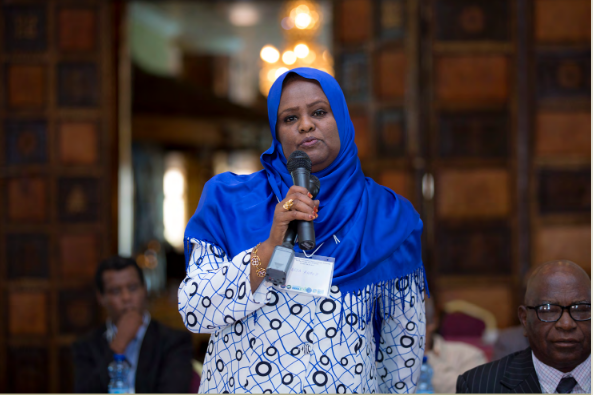
A new resource designed by Tsegaye Tadesse, of the National Drought Mitigation Center at the School of Natural Resources, could predict drought in the Greater Horn of Africa by as much as 10 days to three months in advance of an actual climatic crisis.
In a region dependent on local agriculture, a drought can crush food and water security rapidly and leave tens of millions in famine; the capability to predict the natural hazard would allow countries to respond more quickly and save lives.
“Knowing the seasonal prediction is crucial to food security; drought is the main issue in the Greater Horn of Africa — much more than floods,” said Tadesse, lead researcher on the project and geospatial and remote-sensing expert and climatologist with the drought center. “Drought prediction is really needed.”
Though regional climate information is available, local-level information is not in most GHA countries. Though weather stations exist, the information is not readily accessible or shared. In addition, there is no dense weather station network that could help in monitoring and predicting drought in the GHA region.
That’s why for the past four years Tadesse and others with the drought center, with financial support from the National Aeronautics and Space Administration, have focused on research that improves the global understanding of climate observations and how that information can contribute at the local level.
“The main objective of this project has been research — not implementation,” Tadesse said. “But we want to link it to the farmers and other decision makers — to use it.”
The researchers focused on creating the Vegetation Outlook for the Greater Horn of Africa, or VegOut-GHA, which predicts seasonal vegetation condition patterns based on a standardized “greenness” measure or a general indicator of plant health during the growing season. The tool is based on historical condition patterns (2001 to 2015), and takes into account historic climate-vegetation interactions and environmental characteristics, such as land use and land cover. The tool uses satellite-collected data, which ideally is evaluated against ground-level data.
Together with research partners from Johns Hopkins University, NASA’s Goddard Space Flight Center, the University of California-Santa Barbara’s Climate Hazard Group, the U.S. Geological Survey’s Earth Resources and Observation Science Center and Famine Early Warning Systems Network, the International Research Institute for Climate and Society at Columbia University, the University of Wisconsin-Madison, and the University of Nebraska-Lincoln, they designed the weekly VegOut-GHA map with a 1-kilometer resolution, making it usable at local, county and region levels.
Tadesse, Mark Svoboda, Michael Hayes, Deborah Bathke and Nicole Wall, all of the drought center, organized engagement workshops and interviews with stakeholders from Kenya, Sudan, Ethiopia, Tanzania, Uganda and South Africa to inform the product’s outcome. Those stakeholders included representatives of disaster relief and food security agencies, extension agents, the Famine Early Warning System and others.
“We may have found more questions than answers,” Tadesse joked, “but this is a good beginning.”
The partners agreed VegOut-GHA will be useful in predicting drought events for the Greater Horn of Africa, but training at the local level would be a must if they want to see the resource used widely to prevent and reduce the effects of drought on people, their holdings and their communities.
The researchers would like to see VegOut-GHA linked with a drought early-warning system, which does not yet exist, Tadesse said. But the researchers laid the groundwork for such a system during workshops, focusing on drought risk management, drought planning and drought policy, and how to use the tool.
“Our main challenge will be human resources and money,” Tadesse said. “How do we implement this if there is no money? And if we don’t implement it, how do you use it?”
Tadesse, a native of Ethiopia, isn’t suggesting substantial grants or donations to the cause are necessary. He believes each country in the Greater Horn of Africa should invest in drought education and build early-warning systems from the bottom up, moving toward sustainable development.
“It won’t happen overnight,” he said. But it is something he, Wall and the others at the drought center feel strongly about seeing happen not just in the Greater Horn of Africa, but across the entire continent.
With their drive, it has good odds of happening.
Shawna Richter-Ryerson, Natural Resources
More details at: https://go.unl.edu/sp3y